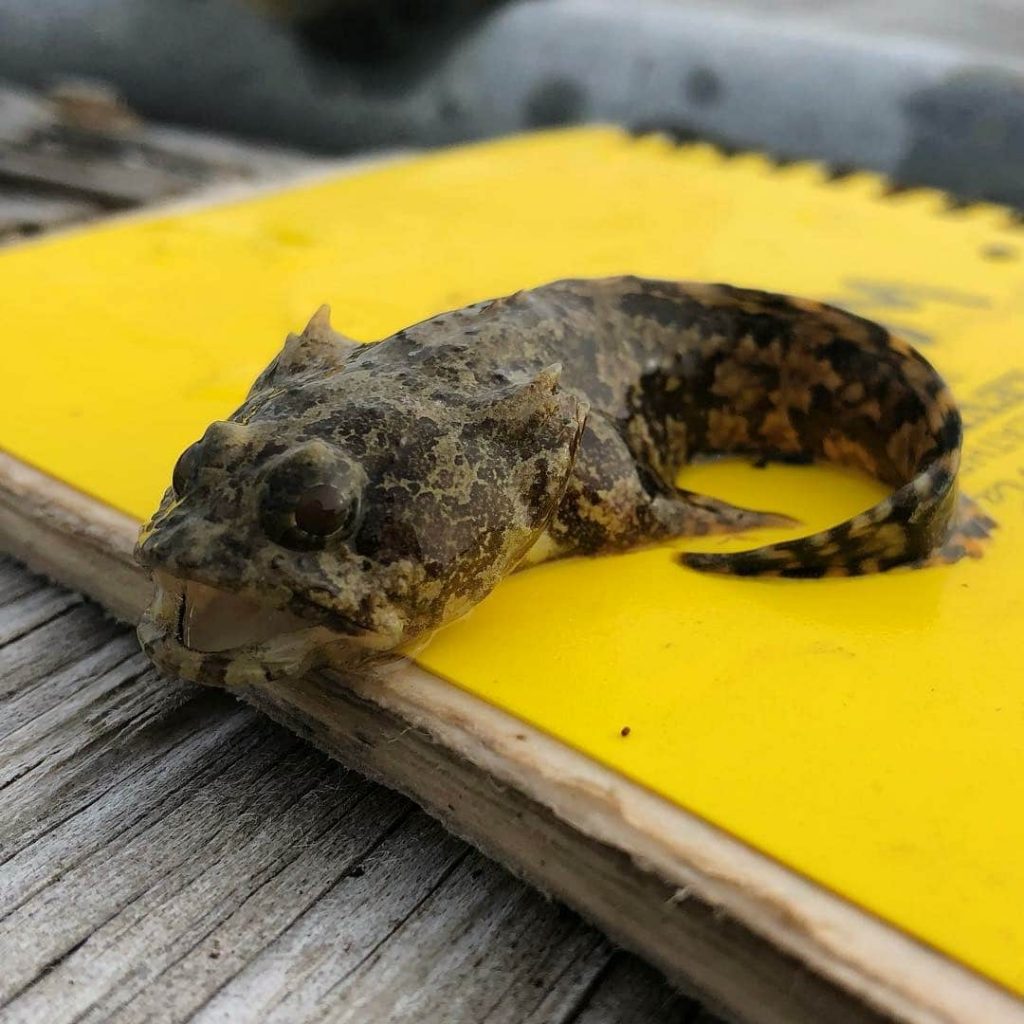A name can make an impression – good or bad. So it is with Gulf Toadfish. Brings a smile to your face, right? Well, let me speak up for the lowly Gulf Toadfish, with a face only a mother could love.
This fish is a member of a family of fishes known as the Batrachoididae: the root word batrakhos is Greek for frog. Other common names include toadfish, dogfish, mudfish, and oysterdog.
Some of these names point to the places where these fish hang out, tucked away in the cracks and crevices of underwater structures like oyster reefs, pilings and jetties. Once out of the water, it is easy to assign the term “mud” to the mix, as they do look a bit untidy and slimy to boot.
The Gulf Toadfish, Opsanus beta, is no exception, being a so-called trash fish that is commonly caught when fishing these areas. With a broad head, a wide mouth and plenty of bumps and horns on its head, it is easy to think toad.
Pick one up and you will soon be covered in slime and perhaps even receive a little bite to introduce you to their mouthful of large, sharp teeth. They may also give off a bit of a croaking sound that the males use to communicate.
Those of us that fish nearshore waters will catch these bait-stealers and think nothing of them other than to “thank” them for wasting the bait and our time. Some may even have thought about eating the bigger ones, that can reach upwards of 12-18 inches.
Eating them is not the best idea, however, as they are known to bioaccumulate ciguatoxins in their flesh that can cause severe symptoms in humans. These toxins originate in certain single-celled marine organisms called dinoflagellates that are part of the base of the food chain. As a carnivore, Toadfish can accumulate these toxins depending upon their diet.
If you do encounter a Gulf Toadfish, take the time for a closer look. Like any creature in our world, there is plenty of beauty to see in their shape, form and color that serves them well.
Hope to see you in our great outdoors!
Photo courtesy of Bryan White.




